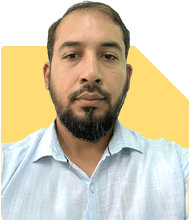Ramalingam Kalirajan |6682 Answers |Ask -Follow
Mutual Funds, Financial Planning Expert - Answered on May 21, 2024
He has an MBA in finance from the University of Madras and is a certified financial planner.
He is the director and chief financial planner at Holistic Investment, a Chennai-based firm that offers financial planning and wealth management advice.... more

I am 46 and Wife 45, together earns 1Cr/Year and No liabilities so far, Started investing in SIP around 2L / Month since a year . We have 3 homes in Bangalore Rental Income of around 70K/Month, one home we are staying. At present Our PF value is around 1.1Cr (together ), Mutual fund so far around 75L. If we continue same investment until 55 years , any idea what would be our retirement asset? Do I need to plan anything beyond?
Assessing Your Current Financial Status
At 46 and 45 years of age, earning a combined income of ?1 crore per year without any liabilities is indeed commendable. Additionally, your diverse investment portfolio comprising SIPs, rental income from properties, and substantial savings in PF and mutual funds reflects a balanced approach to wealth accumulation.
Evaluating Retirement Assets
With your current SIP investments of ?2 lakh per month and assuming a continued investment until the age of 55, it's essential to assess the potential growth of your retirement assets. Alongside your existing assets in PF and mutual funds, your rental income from properties adds to your retirement corpus.
Analyzing Investment Strategy
Your decision to invest primarily through SIPs demonstrates a disciplined savings approach, leveraging the power of compounding over the long term. However, it's crucial to periodically review your investment strategy to ensure alignment with your retirement goals and risk tolerance.
Forecasting Retirement Corpus
While it's challenging to provide an exact figure without detailed calculations, based on your current investment trajectory and assuming a reasonable rate of return on your investments, it's likely that your retirement assets would significantly grow by the age of 55.
Planning Beyond Retirement
While your current financial situation appears robust, it's prudent to consider additional aspects to enhance your retirement planning:
Healthcare Costs: Factor in potential healthcare expenses post-retirement and consider investing in health insurance plans to mitigate financial risks associated with medical emergencies.
Estate Planning: Review your estate planning strategies, including wills and trusts, to ensure seamless transfer of assets to your heirs and minimize tax liabilities.
Lifestyle Expenses: Evaluate your desired lifestyle post-retirement and estimate the expenses required to maintain your standard of living. Consider allocating additional funds towards leisure activities and travel, if desired.
Final Words
As Certified Financial Planners, our goal is to empower you with the knowledge and strategies needed to achieve your retirement objectives. With your disciplined savings habits and diversified investment portfolio, you're well-positioned to enjoy a comfortable and secure retirement.
Warm Regards,
K. Ramalingam, MBA, CFP,
Chief Financial Planner,
www.holisticinvestment.in
You may like to see similar questions and answers below
Ramalingam Kalirajan |6682 Answers |Ask -Follow
Mutual Funds, Financial Planning Expert - Answered on Oct 26, 2023
Ramalingam Kalirajan |6682 Answers |Ask -Follow
Mutual Funds, Financial Planning Expert - Answered on Apr 16, 2024
Ramalingam Kalirajan |6682 Answers |Ask -Follow
Mutual Funds, Financial Planning Expert - Answered on Jun 18, 2024
Ramalingam Kalirajan |6682 Answers |Ask -Follow
Mutual Funds, Financial Planning Expert - Answered on Aug 14, 2024
Ramalingam Kalirajan |6682 Answers |Ask -Follow
Mutual Funds, Financial Planning Expert - Answered on Oct 18, 2024
Ramalingam Kalirajan |6682 Answers |Ask -Follow
Mutual Funds, Financial Planning Expert - Answered on Oct 18, 2024
Ramalingam Kalirajan |6682 Answers |Ask -Follow
Mutual Funds, Financial Planning Expert - Answered on Oct 18, 2024
Ramalingam Kalirajan |6682 Answers |Ask -Follow
Mutual Funds, Financial Planning Expert - Answered on Oct 18, 2024
Ramalingam Kalirajan |6682 Answers |Ask -Follow
Mutual Funds, Financial Planning Expert - Answered on Oct 18, 2024
Aasif Ahmed Khan |158 Answers |Ask -Follow
Tech Career Expert - Answered on Oct 18, 2024
Aasif Ahmed Khan |158 Answers |Ask -Follow
Tech Career Expert - Answered on Oct 18, 2024
Dr Chandrakant Lahariya |38 Answers |Ask -Follow
Diabetologist, Consultant Physician, Vaccine Expert - Answered on Oct 18, 2024
Dr Chandrakant Lahariya |38 Answers |Ask -Follow
Diabetologist, Consultant Physician, Vaccine Expert - Answered on Oct 18, 2024
Dr Chandrakant Lahariya |38 Answers |Ask -Follow
Diabetologist, Consultant Physician, Vaccine Expert - Answered on Oct 18, 2024






















